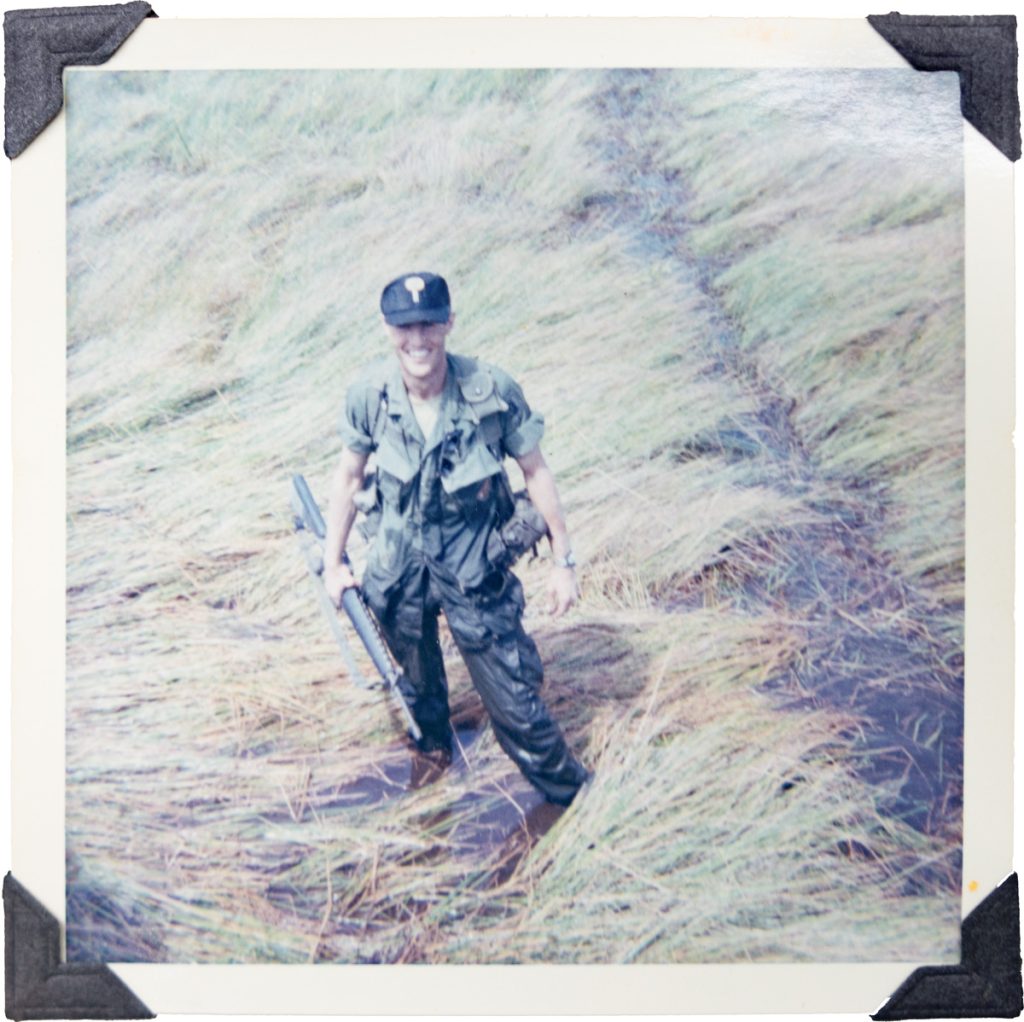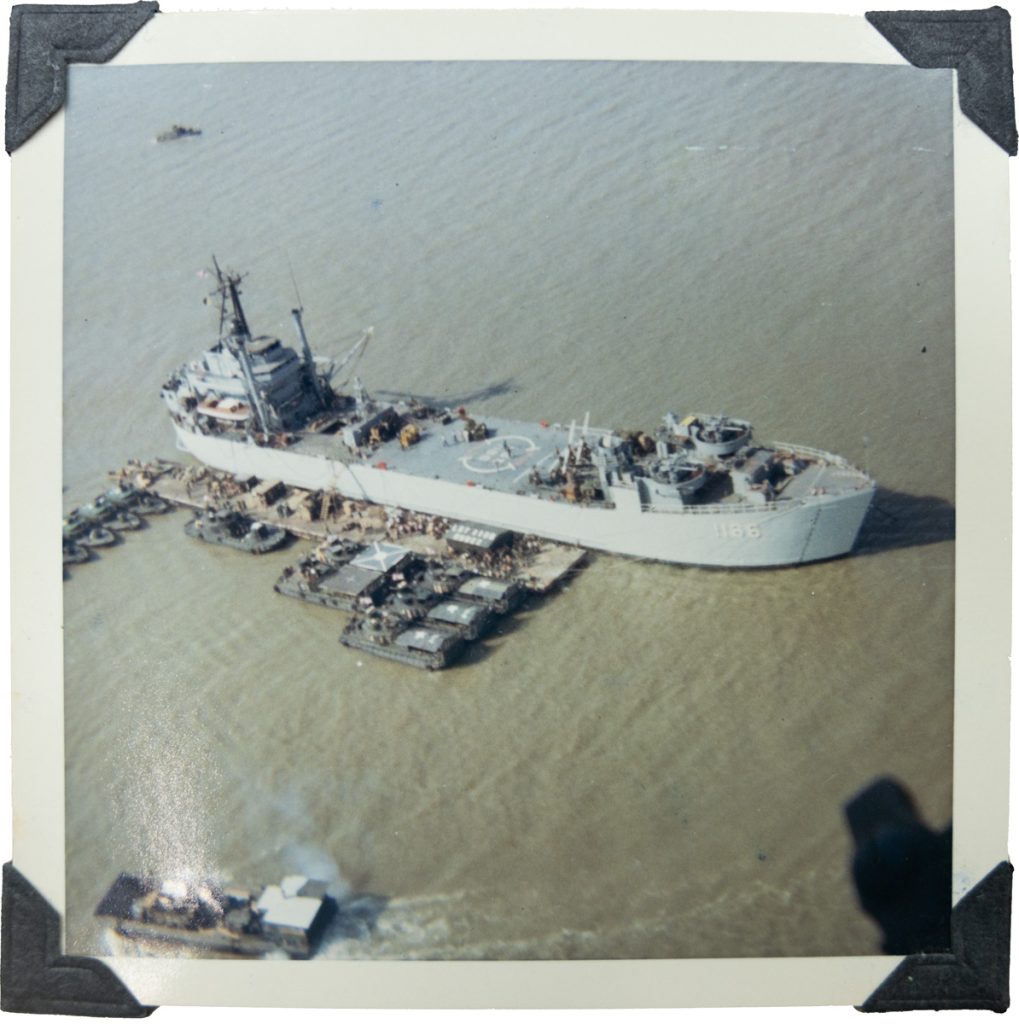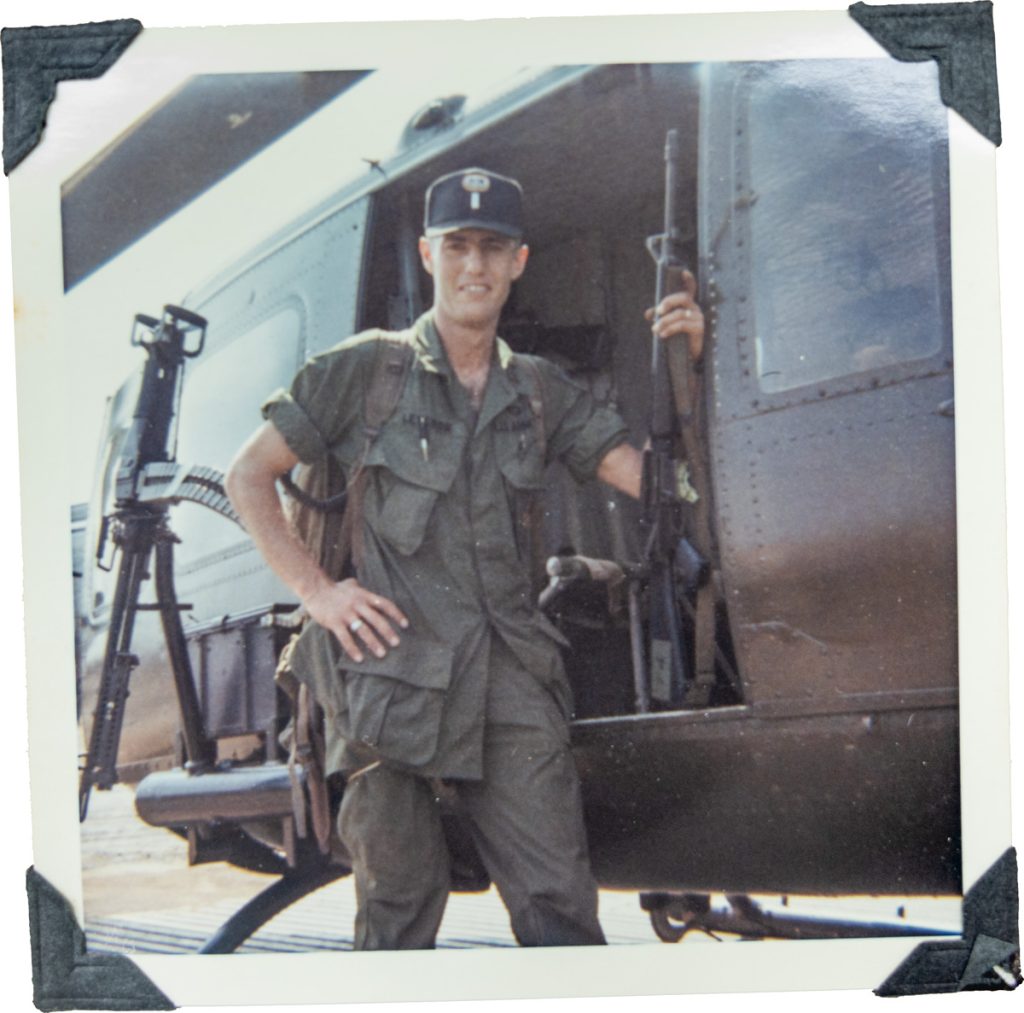Vietnam veteran Randall Leyshon found healing after a half-century of mournful memories
“Did you hear about John?” the young man asked warily, as he and several other 9th Infantry Division Army soldiers chatted with then-1st Lt. Randall Leyshon, whom they had met at Officer Candidate School (OCS) back at Fort Benning, Georgia. It was early 1968, and the men had bumped into each other thousands of miles from home, amid the jungles of Vietnam.
An already typically intense, life-or-death day for Leyshon during his tour in Southeast Asia—he commanded an attachment of Pathfinders, whose primary task was to drop into combat zones and help commanders in the air and on the ground connect as battles raged—was about to take a devastating turn.
“No, what . . .” Leyshon started to reply, but the looks on their faces told him the gut-punch truth without need for the question. His heart dropped; he thought he might topple over.
The previous November 17, 1967, his dear friend John Wesley Terrell, 1st Lt., a 4th division platoon leader, had been killed in action at Kontum, Vietnam. In those days, communications were far from seamless, so the news had not reached Leyshon until that chance encounter with his cohorts.
More than a half-century later, Leyshon still breaks when recalling it. “I just . . .” he begins, as tears well in his eyes. “I got word to [my wife] Patty back in the States, and we both cried. I wish the world could see the relationship John and I had.”
Leyshon and Terrell had met when both were tactical officers for OCS at Fort Benning and become fast friends. Both were from near Akron, Ohio, which accelerated the bond. To some in that era, their kinship seemed “unusual,” says Leyshon, since he’s white and Terrell was black. “It didn’t take long, and he was closer than a brother. He took me to black bars and I took him to redneck bars in Columbus [Georgia]. Our platoons competed. We shot baskets together, and he smoked me.”
Leyshon wanted Terrell to accompany him to jump school and join the airborne, but Terrell demurred and was assigned to Fort Lewis, Washington, in the 4th division, before being deployed to Vietnam in August of 1967. That fall, the two lost contact, leading to the moment when Leyshon heard the news that Terrell was killed while defending a position.
The pain of that day would haunt Leyshon for 57 years, until he finally mustered the gumption to walk up to a wall and find Terrell’s name on a sloping slab of cold, black granite.

Innocence Shattered
The loss of his friend in Vietnam wasn’t the first time Leyshon had endured a tragic parting. Born in Youngstown, Ohio, on July 10, 1940, he lived an idyllic childhood “right next to my grandfather’s farm,” where he learned to ride horses, shoot guns, fish, trap, and swim in farm ponds. When he was 9, his dad was transferred to Detroit, and Leyshon would graduate from Dearborn High in 1958.
On January 2 of his senior year, he and several friends were working on a car at the home of their buddy Jeri Chapman. Randall and Jeri were both planning to attend Central Michigan University, where Randall would run track and Jeri would swim. The two shared fond memories of playing ball and going to church; their fathers were close friends.
But in a moment of unspeakable terror, the jack was knocked loose and the car fell and crushed Jeri, killing him instantly. Even all these years later, the pain is palpable for Leyshon. “At 17 going on 18, you think you’re invincible, and then that horrible experience happens,” he sighs. “I had phenomenal parents, and they got me through it.”
Among other effects, the tragedy altered Leyshon’s trajectory: He earned a degree from Miami of Ohio, went to work for an auto-insurance exchange, and was preparing to enroll in law school when “Uncle Sam came calling.”
Battle Tested, Battle Ready
It was 1965, and because he was not yet in law school, he was drafted and shipped to Fort Benning for basic training. He recalls the wooden barracks with a potbellied stove, the old-style latrines, and the customary berating by drill instructors.
Through testing, Leyshon qualified for special forces (Green Berets) and infantry Officer Candidate School. He ended up selecting OCS and enrolled at Fort Benning after completing Advanced Infantry Training (AIT) at Fort Dix, New Jersey.
Meanwhile, Leyshon had met Patty after he was drafted but before basic. Their whirlwind romance would lead to marriage on April 30, 1966. “I had a 30-day leave before OCS, so we took a five-day honeymoon, and then I didn’t see her for six months,” Leyshon says.
Fast-forward to his final few weeks of OCS. A sly smile crosses Leyshon’s face when he recalls a Sunday afternoon. He and Patty, afforded some rare time together, drove to a remote part of the base and were enjoying a dash of marital intimacy (a no-no) when an MP appeared and tapped his baton on the car window. “I thought, I’m history,” Leyshon recalls. But the MP “saw that I was about to graduate from OCS [because of the blue insignia] and said, ‘Get the hell out of here. I’m not gonna report you.’ I was immensely relieved.”
His relief would be short-lived. The US was ramping up in Vietnam, and it was a matter of time before Leyshon would be sent over.

Connecting Commanders
During his tour, Leyshon was tasked with leading Pathfinders. The role had developed in World War II, when airborne troops would land scattered and need help to reconnect. (If you’ve seen the Band of Brothers series’ “Day of Days” episode, you can picture this.) “Pathfinders went in ahead of the jump, secured the landing zone, and set up communications between the ground and the pilots,” Leyshon says.
In Vietnam, the role was similar, providing ground-to-air communication, working with battalion commanders, linking helicopter units and artillery units, calling in artillery batteries, and more. Danger and death loomed at every turn. Leyshon recalls an incident in which a chopper went down in a mountainous area. “The jungle just engulfed it and everyone on board. We searched but never found them. That was a very unfortunate situation.”
He also recounts when a South Vietnamese man who had been employed as a barber for US troops, and whom Leyshon knew, was killed by US troops in a firefight during the Tet Offensive; they hadn’t known he was Viet Cong. “One of my men called me over, and I saw his body. It was gruesome.”
When his tour ended, Leyshon returned home to command a mechanized infantry company at Fort Carson, Colorado. “It was horrible,” he recalls. “We were getting 19- and 20-year-old kids coming back from Vietnam, with a month or two left to serve. They’d been through hell. We had major drug problems, fights, discipline issues.” Leyshon himself wouldn’t be immune from the lingering effects of war.
The Fight Beyond the Fray
He stayed in the service for a short time, but that wasn’t the best fit for Patty and their family. Their son, Curt, had been born during Leyshon’s Vietnam tour, and a daughter, Lisa, would arrive a few years later. Still, Leyshon felt a pull to remain in the military. “I had bonded with my men, life or death, in those boondocks,” he says. “It was hard to imagine anything else.”
(Years later, he and Patty went to see the film American Sniper, which portrays the angst of returning to civilian life after war. As the lights came up, Patty looked at her husband and said, “I get it now. I understand why you wanted to stay in the army.” Right there in the theater, the couple embraced and cried together.)
After his honorable discharge as an infantry Captain, Leyshon tried different manufacturing roles before finding a sweet spot in the office furniture business, the trade his father had plied.

It would take a few years for Leyshon to realize the extent of his post-traumatic stress disorder (PTSD) and to seek help. He can’t say enough about Patty’s role. “She stuck with me in the darkest of times.” He and Patty raised their kids in Ohio before moving to East Tennessee and settling in Tellico Village in 2002.
Leyshon is quick to credit his former employer, Office Furniture Outfitters; its owner, Jim Burns; and Jim’s dad, Jerry Burns, for being “so great to me, and to Patty” over the years. Leyshon and the leadership shared much in common: They were all from Ohio, Jerry was a fellow Vietnam vet who had flown choppers and appreciated the role of Pathfinders, and Jim was a year older than Leyshon’s own son. “They’re just top-notch,” Leyshon says.
As he looks back, Leyshon says his service reinforced his view of America as “the land of opportunity. It was an honor to serve and be part of an organization that has protected the ideals of what it is to be an American. To be part of a country where it’s irrelevant who your father was. It’s more important who you are. The opportunities are abundant.”
Over the years, when the idea of visiting the Vietnam Veterans Memorial in Washington came up, Leyshon felt almost paralyzed. “I just can’t go and look at all of my friends’ names,” he’d conclude. But after his beloved Patty passed on September 30, 2022, and at the gentle but persistent urging of his children, Leyshon, struck by life’s brevity, knew the time had come. He resolved, “I’ve got to go talk to John.”
A Pencil on the Wall
And so, in a cathartic, full-circle experience, Leyshon was granted a seat on the HonorAir Knoxville flight to Washington on April 10, 2024, where he gently pencil-etched his friend John Terrell’s name from the wall onto a rectangular sheet of paper.
Leyshon cherishes that page and always will. More than that, he cherishes what it symbolizes: one last visit to reminisce with his brother in arms, to let the pain of Terrell’s long-ago but still-fresh fall in battle rise to the surface, to feel its weight, to weep over it, to release it, and to walk away having extended a long-overdue farewell.
Thanks to Leyshon, others may now reflect on that soldier and all that he meant—and still means—to the friend who has fulfilled a sacred duty: to keep alive the memory of their kinship and to honor a hero’s service and sacrifice to a grateful nation.

Comments are closed.